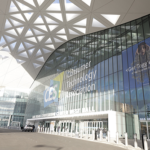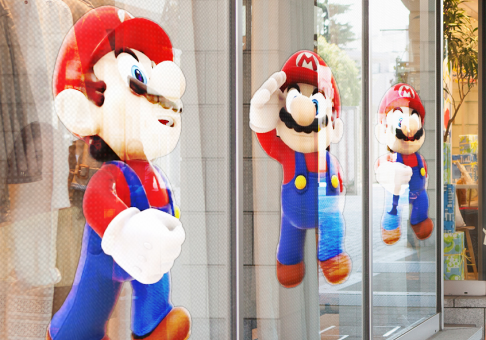The curtain has fallen on CES, the world’s largest consumer technology expo, and there are two highlights worth our attention
2024-01-16
CES 2024|美矽微全息隐形屏,快速自由拼接、超轻薄吊装解决方案重磅亮相
2024-01-16As society rapidly advances, various industries are advocating for the production of environmentally friendly products, and the LED industry is no exception. LED transparent screens have been widely used in various corners of the city and have become a unique symbol to enhance the city’s image and beautify its appearance. The LED industry should keep pace with the times, respond to the national call, and promote energy-efficient and environmentally friendly products. It is well-known that LED display screens may not achieve ideal energy efficiency due to their high brightness, but that does not mean they must be high-energy-consumption products. So, how can LED transparent screens be more energy-efficient?

Choosing environmentally friendly materials
Selecting an LED display screen made of environmentally friendly materials, processed through special techniques, eliminates the need for glue, achieving waterproof, dustproof, and UV-resistant properties for the screen. Compared to products produced with conventional processes, this approach consumes fewer materials, making it more environmentally friendly.
Constant Current Noise Reduction Technology
The LED display driver chip adopts an internationally advanced LED display dedicated chip system, leading the industry in the field of full-color LED displays. Combining its chip characteristics, constant current noise reduction technology has been developed to ensure that the impact of power supply and other noise sources on LED electronic displays is reduced to a minimum. Some driver ICs can also save energy by reducing the original 5V voltage to 4.2V, achieving energy-saving functionality.
Utilizing an Automatic Brightness Adjustment System
Depending on day and night, different locations, and time periods, slight changes in the brightness of the display screen can have a significant impact. If the playback brightness of the LED display screen is greater than fifty percent of the ambient brightness, we will clearly feel eye discomfort, causing “light pollution.
Multi-level Gray Correction Technology
Conventional LED display systems use an 18-bit color display hierarchy. In some low gray levels and color transitions, colors may appear harsh, resulting in discomfort with colored light adaptation. The new LED large screen control system adopts a 14-bit color display hierarchy, significantly improving the color transition hardness, making colors feel softer, and avoiding discomfort with light when people watch.
Power Supply
The realization of energy-saving LED displays primarily focuses on the power supply. Directly adopting a half-bridge or full-bridge high-efficiency switch power supply on the existing LED display, combined with synchronous rectification, produces a significant energy-saving effect. In the constant current state of the driving IC, efforts are made to minimize the power supply voltage, achieving a better energy-saving effect by separately supplying power to the red, green, and blue tubes.

